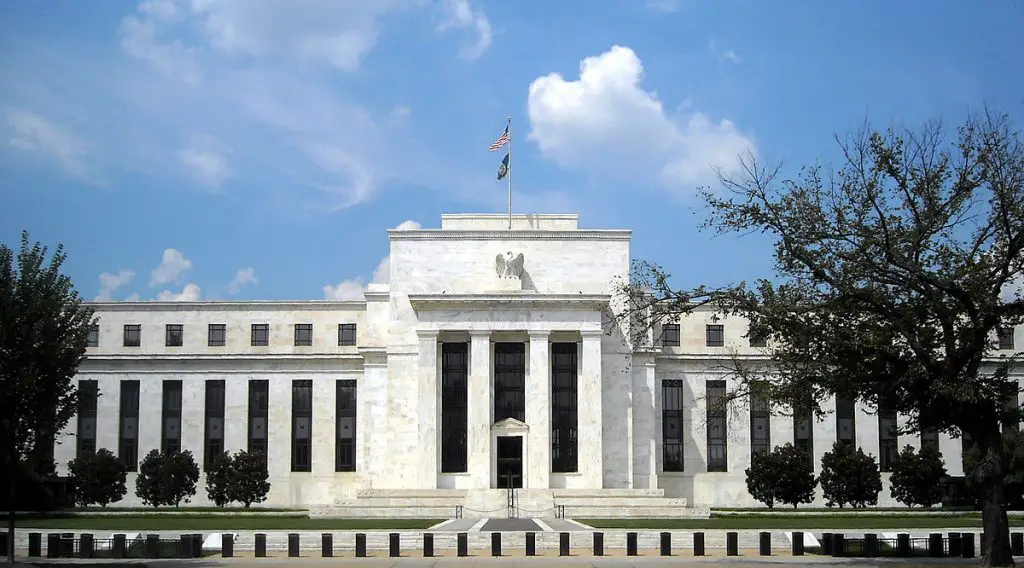Monetary policy is used by a central bank of a country to try to manage and control the money supply for a currency in its banking system and internationally. A central bank tries to use monetary policy to lower the rate of inflation and create price stability for faith and confidence in the stable value of buying power of their currency. A central bank also sets interest rates at a specific level for short-term borrowing between banks for loans.
Central bank monetary policy is different than fiscal policy for a nation. Fiscal policy is set through taxes along with a budget for the government spending and borrowing. In most countries monetary policy is independent from politics and managed by a separate institution than fiscal policy.
Monetary policy attempts to manage the business cycle of booms and busts through the use of increasing and decreasing the supply of money. A central bank will try to lessen the impact of a recession and decrease its magnitude and length. The tools it uses is creating more money for circulation when liquidity is needed or removing excess currency reserves from the system when it is not needed. It can also adjust interest rates to slow down or speed up economic activity.
Monetary policy tries to stabilize gross domestic product, keep low unemployment rates, and keep its currency exchange rates stable with low volatility.
Monetary policy can be looked at as expansionary or contractionary.
Expansionary policy is used to stimulate economic activity by maintaining low short-term interest rates to increase borrowing to raise the total supply of money available for business activity. Low interest rates try to encourage businesses to use credit to expand operations and hire more workers to decrease interest rates. Low interest rates tries to increase demand for money through loans to expand gross domestic product. By increasing the supply of currency in circulation it lowers its value in relation to other national currencies through the exchange rate so foreign buyers will have more purchasing power from their own native currency in the nation with the currency of lower value. This can create more economic activity from foreign businesses getting increased buying power. This is policy used to get an economy out of a recession or to prevent one from evolving into a depression.
Contractionary policy keeps short-term interest rates high to decrease or at least slow the money supply growth rate and lower the rate of inflation in an economy. A contractionary policy will usually cause a growing unemployment rate, less borrowing of money for new economic activity, and a drop in business and consumer spending due to a higher cost in borrowing money. If these actions are great enough it will usually result in an economic recession. This is policy used to cool off an overactive economy that is causing a boom leading to a bubble. These policies are also used to stop runaway inflation that is destroying the purchasing power and value of a home currency.
Central bank monetary policy decisions consider a wide range of factors:
- Short-term interest rates.
- Long-term interest rates.
- Velocity that money is moving through the economy.
- Currency exchange rates.
- Quality of credit.
- Bonds.
- Stock market.
- Debt.
- Government versus private sector spending/savings.
- The magnitude of international capital flows of money.
- Derivative markets: Options, swaps, futures contracts, etc.
The most important thing that a trader or investor needs to understand is whether the central bank in their country is using accommodative monetary policy for their markets and economy. Accommodative monetary policy allows for loose credit requirements and is the easy money policy. This is expansionary as the total money supply is increased to grow the economy and GDP. This allows the money supply to rise with demand so there is plenty of cheap money that can be invested in the stock market for capital gains through arbitrage. When interest rates are low capital goes in search of yield and returns and a lot of this money can end up in equities pushing prices higher through the buying pressure.
Central banks choose the path that an economy, market, and a currency will take over the long term through the monetary policy they choose to meet their goals. They have trillions at their disposal and win the battles they choose to fight.
“Monetary conditions exert an enormous influence on stock prices. Don’t fight the Fed.” – Marty Zweig

AgnosticPreachersKid / CC BY-SA (https://creativecommons.org/licenses/by-sa/3.0)